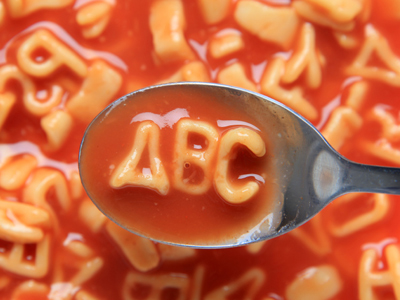
Ask the AI Tutor
Need help with Alphabetising? Ask our AI Tutor!
AI Tutor - Lucy
Connecting with Tutor...
Please wait while we establish connection

You will need to know your alphabet for this quiz!
Alphabetising
Alphabetical order speeds up searching. Learn how to compare letters and words, handle tricky ties, and use dictionaries and indexes with confidence.
1 .
Which list of words is in alphabetical order?
bottle, burger, baby, bun
burger, baby, bun, bottle
baby, bun, bottle, burger
baby, bottle, bun, burger
BAby, BOttle, BUN, BURger. It's so easy!
2 .
Which list of words is in alphabetical order?
agree, agreeable, agreed, agreement
agree, agreed, agreeable, agreement
agreement, agree, agreed, agreeable
agreeable, agreement, agree, agreed
agree, agreeAble, agreeD, agreeMent
3 .
Which list of words is in alphabetical order?
x-ray, yoga, vacuum, zebra
vacuum, x-ray, yoga, zebra
yoga, x-ray, vacuum, zebra
vacuum, yoga, x-ray, zebra
Vacuum, X-ray, Yoga, Zebra
4 .
Which list of words is in alphabetical order?
dragon, drain, drink, drip
drain, dragon, drink, drip
drip, drain, dragon, drink
drain, drip, dragon, drink
draGon, draIn, drINk, drIP
5 .
Which list of words is in alphabetical order?
camping, camped, camper, camp
camper, camped, camp, camping
camp, camped, camper, camping
camped, camp, camper, camping
camp, campED, campER, campIng
6 .
Which list of words is in alphabetical order?
small, smack, smart, smash
smack, small, smart, smash
smart, small, smack, smash
smash, smart, small, smack
smaCk, smaLl, smaRt, smaSh
7 .
Which list of words is in alphabetical order?
heart, head, heap, health
head, heap, health, heart
head, health, heap, heart
heap, head, health, heart
heaD, heaLth, heaP, heaRt
8 .
Which list of words is in alphabetical order?
front, frog, frost, frown
frog, front, frost, frown
frown, frog, front, frost
frost, frog, front, frown
froG, froNt, froSt, froWn
9 .
Which list of words is in alphabetical order?
succulent, successive, succeed, successful
successive, succeed, successful, succulent
succeed, successive, successful, succulent
succeed, successful, successive, succulent
succeeD, successFul, successIve, succUlent
10 .
Which list of words is in alphabetical order?
table, tablecloth, tablespoon, tablet
tablecloth, table, tablespoon, tablet
tablet, tablecloth, table, tablespoon
table, tablet, tablecloth, tablespoon
table, tableCloth, tableSpoon, tableT
**Unlimited Quizzes Await You! 🚀**
Hey there, quiz champ! 🌟 You've already tackled today's free questions.
Ready for more?
Ready for more?
🔓 Unlock UNLIMITED Quizzes and challenge yourself every day. But that's
not all...
not all...
🔥 As a Subscriber you can join our thrilling "Daily Streak" against other
quizzers. Try to win a coveted spot on our Hall of Fame Page.
quizzers. Try to win a coveted spot on our Hall of Fame Page.
Don't miss out! Join us now and keep the fun rolling. 🎉
**Unlimited Quizzes Await You! 🚀**
Hey there, quiz champ! 🌟 You've already tackled today's free questions. Ready for more?
🔓 Unlock UNLIMITED Quizzes and challenge yourself every day. But that's not all...
🔥 As a Subscriber you can join our thrilling "Daily Streak" against other quizzers. Try to win a coveted spot on our Hall of Fame Page.
Don't miss out! Join us now and keep the fun rolling. 🎉






